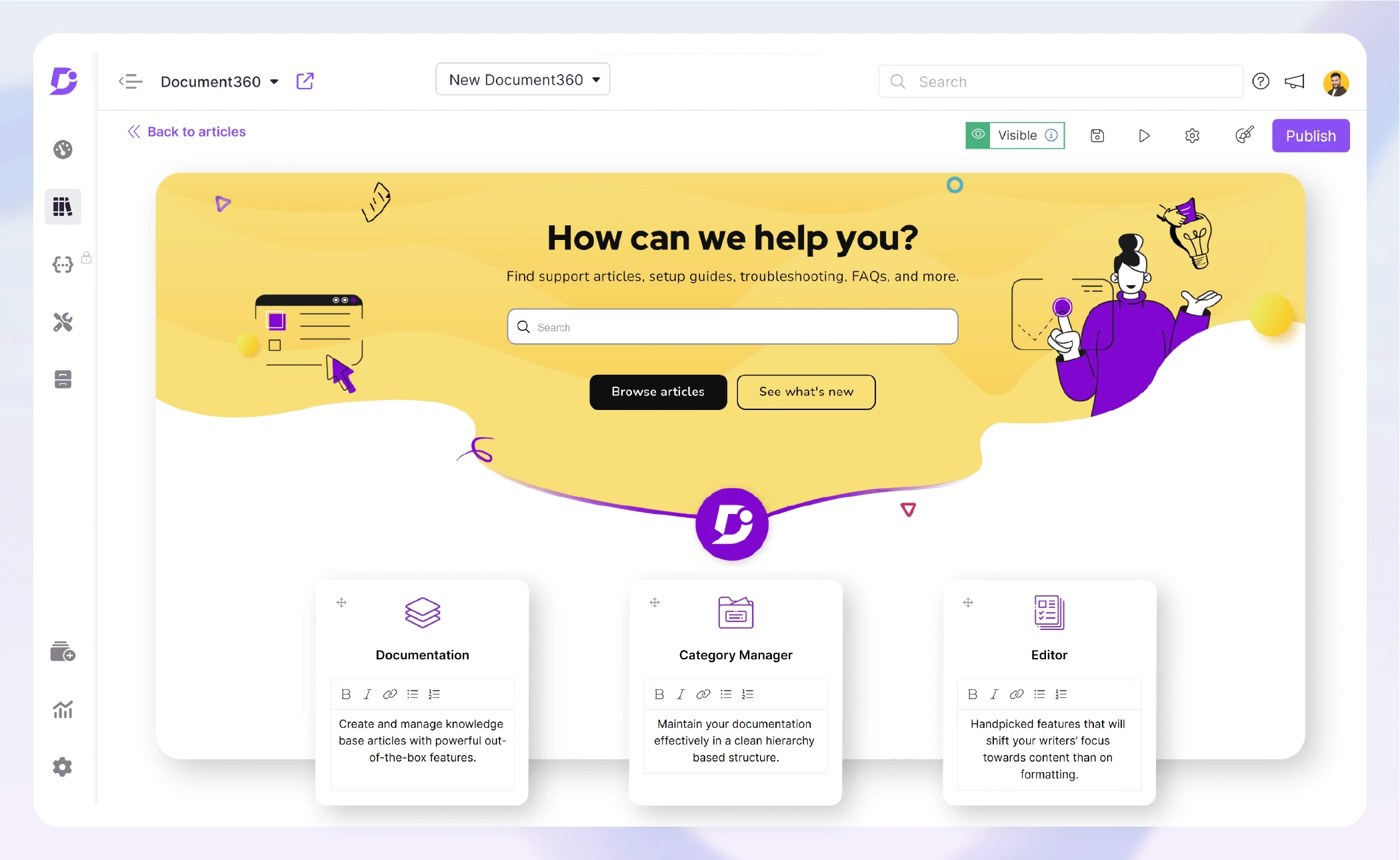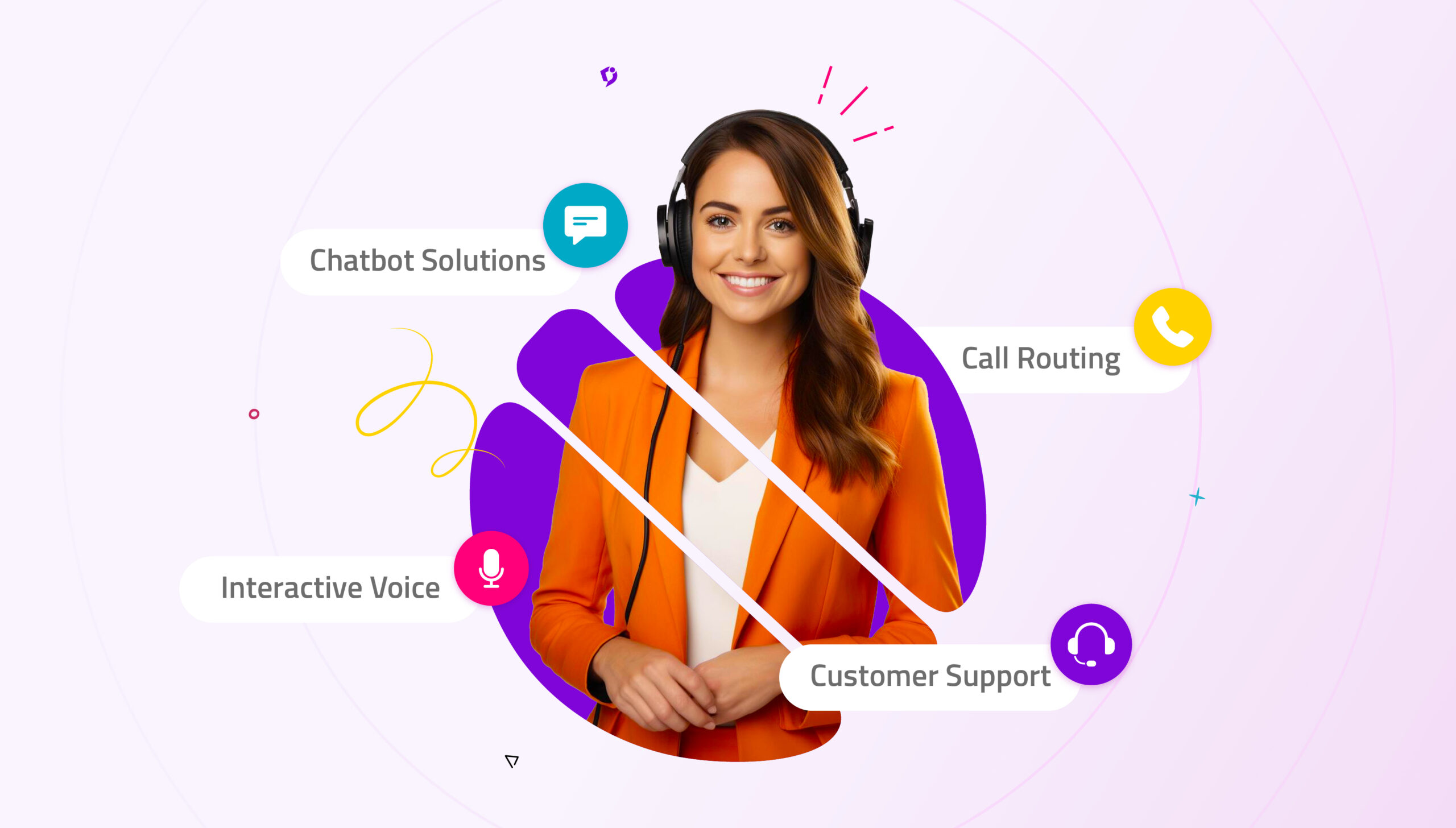If you’re running a call center, you’ll undoubtedly have encountered spikes in call center volume over time. Unfortunately, it’s not an option to simply avoid picking up the phone. That’s why many call centers suffer from spiraling costs and burnout among their agents. Call centers aim to answer 80% of calls within 20 seconds, but even this Average Speed of Answer (ASA) is not enough to reduce the queue volume.
Customer service departments need to find ways to manage the volume of calls they receive from customers while keeping quality high and rushing customers off the phone results in a poor customer experience and failing to solve problems. The matter is important since queues cost businesses £12 billion a year in lost sales. But then, what can businesses do to reduce call center volume without neglecting customers?
The answer is quite a few things. Some involve driving efficiencies, and others invest in new technologies. Call volumes will always increase as long as you continue to win more customers. That’s why you must develop a strategy to manage this trend.
What is a High Call Center Volume?
High call center volume is when the number of calls your customer service team receives is too much for them to handle. High call volume is defined as 10% above the level expected for their team. 60% of customers are only willing to wait on the phone for less than two minutes, and 13% refuse to stand for any hold time at all.
You know your call center volume is too high when wait times are becoming longer than you would like, customers are dissatisfied and maybe even churning before you get to their turn. Agents are feeling overwhelmed with the number of calls, and agent turnover is high. In fact, contact centers have a higher agent turnover than any other industry.
The idea of waiting on hold for ages is a classic customer service meme. No customer wants to fall into the abyss of the queue, and businesses do this every day. “Your call is important to us” starts to ring hollow when customers despair of any hope that their call will be answered anytime soon.
What Factors Contribute to Elevated Call Volumes?
Understaffing is a big problem in call centers with high call volumes, but inefficiencies also play a big role. It’s not always about hiring more agents if your budget will not permit it. Allowing customer problems to linger encourages more calls to your call center.
The majority of customers would like to self-serve, but very few of them actually do since 40% have to resort to a call center. This failure has to do with blockages in the self-service process or a lack of relevant information. Your knowledge might be out of date, hidden away, or not mobile-friendly.
High call center volume is usually due to a lack of resources and an absence of insight, sometimes resulting from too rapid scaling. More customers are usually positive for business, but a drop in customer satisfaction is often an unfortunate consequence. That means better preparation and more sophisticated tools will usually lead to reduced call volume.
10 Ways to Reduce Call Center Call Volume
Now we’ll look at the ways that call centers can reduce their call volume without hiring more agents.
1. Identify the Reasons Behind Calls
First, you need to look at causation. Why are customers calling you in the first place? If you find out, maybe there’s something you could do about it.
If you identify the reasons driving more customer calls, you stand a better chance of solving a problem at the root. If you understand why, you can eliminate future calls by creating a better customer experience or journey.
For example, if customers are continually getting in touch about your returns policy, make this information clearer on your website. If calls concern lost deliveries, you need to address a problem with your courier company.
2. Build a Self-Service Knowledge Base
Deflecting tickets is a key way to minimize high call center volume. It means averting the need for a customer to submit a ticket before it hits your help desk. Usually, the way to do this is to ensure customers can solve problems themselves – particularly through self-service content.
78% of customers prefer a product to have an online self-service portal over traditional customer service support. As a result, they will welcome your knowledge base if it provides the answers they seek. Far from alienating your customers by preventing them from reaching a human, self-service knowledge base, respect their time and eliminate the tedium of waiting on hold.

Build your Knowledge base with Document360 in minutes. Yes, Documen360’s AI features help you to create, edit, and publish a self-service knowledge base easily. AI-powered search helps customers to find the information in a fraction of second and Eddy, the AI concierge, can understand user queries and provide accurate information with reference articles. AI writer can assist you in creating content, recommending titles, generating SEO meta descriptions, also recommending tags to organize your knowledge base.
Apart from these AI features, it also has version control, rich editor, customization, categorization, integrations, and more.
Schedule a demo with one of our experts to take a deeper dive into Document360
Book A Demo
3. Optimize Call Routing
Another way to minimize call center volume is to accelerate the time it takes to resolve a call using an automatic call distributor (ACD). That means optimizing call routing is a viable strategy. With call routing, you would place each incoming call in a queue and route it to the correct person or department automatically using this call management feature.
Eliminating the need for customers to repeat information to multiple agents is another benefit of call routing. You need to continually test your phone system to check whether call routing is optimized. This means agents spend less time routing customers and more time helping solve problems.
Also Read: Why Call Center Quality Assurance is Key to Customer Satisfaction?
4. Prioritize Omnichannel Support Strategies
It may sound obvious, but diversifying your channels and prioritizing omnichannel support can be a good way to reduce call center volume. Look at it this way. If a customer contacts you on live chat, they can get on with other tasks until one of your agents is ready to respond. This is less frustrating than waiting for a long time on hold.
Email is similarly effective for busy customers waiting for a resolution. Asynchronous communication means customers can get on with their day because they don’t expect an immediate response. Reassure customers that they don’t need to call your phone line in order to be treated as a priority. Complex support can be provided on multiple channels.
5. Implement Interactive Voice Systems
If you’re already using call routing, then it’s one short step to implementing interactive voice response systems (IVRs). These are often integrated and perform related functions since call routing rules can be used to determine a customer’s path through the IVR. 83% of customers expect to engage with someone immediately when contacting a company.
IVRs allow customers to use speech recognition to interact with a computer-operated telephone system. These systems are designed to handle a high volume of calls. Although technology has been around for decades, it was only in the 2000s that IVR systems became a more common way to manage customer call volume through reduced technological costs.
6. Elevate Customer Support Quality
Improving the quality of existing customer support is a vital first step to reducing call center volume. Better customer service positively impacts key metrics like First Call Resolution Rates and Average Time to Handle, which we’ll delve into in a little bit. Getting to the root of the problem for your customer means there will be fewer repeat calls, so you can lower call volume.
The time you spend on an initial call may not reflect the total time you spend solving a problem for one particular customer. Not only is dragging out a problem a waste of time, but it also lowers customer satisfaction and increases churn.
7. Invest in Chatbot Solutions
Chatbots are like your robotic assistants waiting in the wings to help customers. If your chatbot can answer a query from a customer, that’s fewer calls to your call center. It’s much easier to manage call center volume when automation and AI can take care of customers. The great news is you can also integrate chatbots with your knowledge base for better support.
It’s possible to program your chatbot to replicate the service customers would receive from one of your call center agents. Chatbots represent your brand and can be trained to give more intelligent answers over time. Generative AI chatbots are even more human-like with the ability to give more emotional, contextual responses.
8. Offer Callback to Customers at Their Convenience
63% of customers would rather receive a callback than wait on hold for customer service. Offering callback means you can handle peak call volume without employing more agents who would then sit around idly when call volume drops back to a lower level. Although you may be able to anticipate your highest call volume times, incoming calls can vary. You need to manage your resources.
With callback, you have fewer customers waiting in line. This also lowers costs. Customers can schedule a callback during their preferred date and time instead of waiting on hold. It requires a dedicated business phone system to work.
9. Automate Manual Processes
Agents can spend a lot of time reporting on calls, updating customer records, tagging tickets, and more. Automating these administrative tasks is a good idea because agents can spend less time managing calls. This means they have more time to devote to customers and their issues.
Invest in a call center that employs AI and automation to help you manage manual tasks. You can automate workflow operations, provide SMS updates, and analyze trends to make your customer team more efficient.
10. Proactively Tackle Customer Issues
There is a growing interest for companies to provide proactive customer service as well as reactive customer support. Proactive customer support means anticipating customer needs. For example, by releasing a statement during an outage, you avoid an onslaught of new calls to your team.
Averting problems before they arise means fewer customers will get in touch with your contact center. And 97% of customers actually want your company to contact them proactively.
Also read: How an AI-Powered Knowledge Base Helps Customer Support
Measuring Success in Call Center Volume Reduction
How will you know when you have actually achieved success in reducing call center volume, apart from fewer calls?
Defining Key Performance Indicators (KPIs)
First of all, define KPIs that are relevant to the aims of your customer service team.
Some common KPIs to use are:
- First Contact Resolution
- Average Time to Handle
- Average Call Duration
- Customer Satisfaction Score
- Total Self-service Interactions
All of these KPIs influence the total call volume your customer support team is likely to experience. To calculate First Contact Resolution, for example, divide the number of calls resolved on first contact by the total number of calls received, then multiply by 100.
It could be 70 calls resolved on first contact / 100 total calls x 100 = 75%.
Setting Achievable Goals and Benchmarks
Set goals for your call center. An achievable goal should be SMART. This means fulfilling the following criteria:
- Specific – easily defined and understood so that you know when you have achieved it.
- Measurable – a quantifiable goal that you could assign a number to.
- Achievable – a goal that could be realistically achieved with your current resources in a reasonable timeframe.
- Relevant – related to the ultimate changes that you want to make in your business.
- Time-Bound – setting a concrete deadline for when you should have achieved your goal.
Following these rules will make it very clear when you have achieved
your goal. It should be based on benchmarks that are comparable to similar businesses in your industry.
Your goals must be challenging but realistic. They must stimulate improvements in the direction you wish to move.
Strategically Optimizing Call Center Approaches
One strategy that works for reducing call center volume may be inappropriate over time. You need to integrate a range of approaches to ensure optimal performance for your agents and the best customer experience. Reducing call center volume not only makes your business more viable but also makes customers happy bythrough shortening support queues.
Promoting a Culture of Ongoing Improvement
Whatever strategies you implement, continually improving customer service means you will develop a culture that always strives to improve standards for customers. What works for you one day may be outdated tomorrow. Customers appreciate ongoing innovation and your efforts to increase value.
Also Read: How GenAI tools with knowledge base integration can reduce customer support tickets?
Wrapping Up
High call center volume is usually an indication of a growing customer base. This is good news for the business. Maintaining quality and fast, efficient customer service is essential when acquiring more customers. Thus, managing call center volume is a tactic to employ as your call center grows and your business becomes more profitable.
Ignoring customers is not an option. Nor is neglecting customers until they hang up. You have to find a way to quickly blaze through the queue and ensure customer satisfaction stays high.
Whether it’s ensuring customers can speak to you on their own terms, taking steps to reach out to customers first, or improving agent efficiency, there are many ways you can reduce call center volume.




 –
– 

